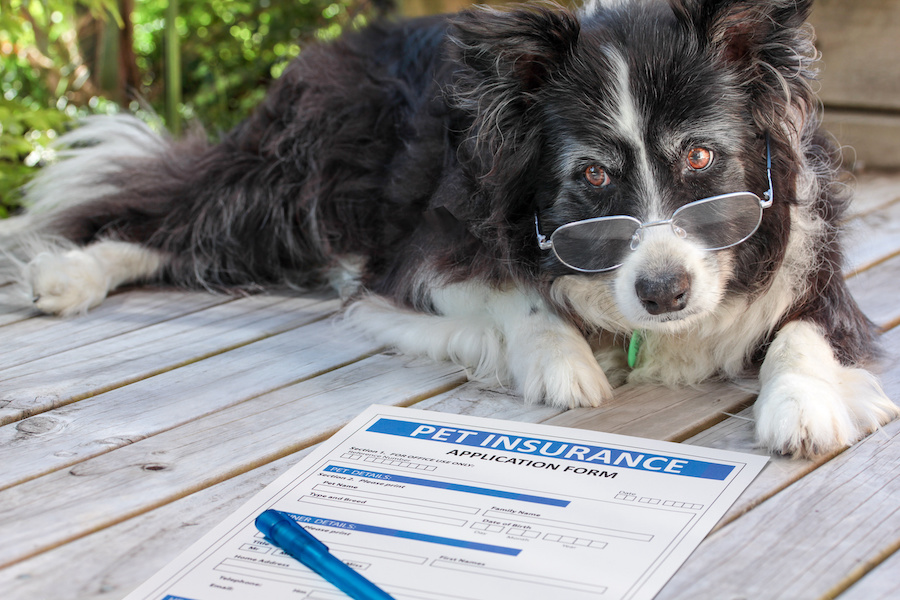
Having a pet in your life is like having another member of the family. You love them, and love spending time with them, but you’re also responsible for their well-being. Pet insurance provides reassurance that you’ll be able to take care of your furry friend’s health while also protecting your bank account.
Average Prices
Like other forms of insurance, the price of pet insurance is impacted by factors like where you live and what deductible you decide on. Your pet’s species, breed, and age matter a great deal, too.
According to the North American Pet Health Insurance Association (NAPHIA), an accident and illness policy for a dog costs an average of $583.91 per year, or $48.66 per month.
Premiums for cats are generally less because their veterinary care is cheaper. Indeed, the average annual premium for an accident and illness policy is $342.84 per cat, according to the NAPHIA. That works out to $28.57 per month.
While pet insurance can seem pricey at first glance, out-of-pocket pet care is becoming more expensive every day. Prices for vet services have spiked 10% in the last year alone, government data shows, the biggest such jump in decades.
What Specific Factors Impact the Cost of Pet Insurance?
As with other kinds of insurance, you can get quotes from different providers to find the best balance of coverage and price. You can also adjust factors like your coverage limit and reimbursement level to create a specialized package that works for you and your pets. Knowing what impacts these rates will help you choose a policy with confidence.
Coverage is the biggest factor in determining your insurance cost. You can usually choose from several different options, including:
Accident and illness: This coverage provides reimbursement for pets who need diagnostic testing, prescription medications, hospitalization, surgical procedures, and veterinary care due to unforeseen illnesses and accidents.
Accident only: This covers medical care related to accidents that result in injuries like torn ligaments, poisoning, lacerations, bite wounds, and broken bones.
Wellness add-on: This is rarely offered as a base policy, but can be purchased as an add-on to cover preventative care for your pet. Eligible services can include vet visits, vaccinations, surgery for spaying and neutering, and wellness exam fees.
Other factors that impact the cost of pet insurance are:
Deductible: This is the amount you must pay before your insurance policy kicks in. Pet insurance deductibles usually range from $100 up to $1,000. Higher deductibles mean lower monthly costs.
Discounts: Many pet insurers offer discounts for employer-sponsored plans, military members, special interest clubs like AARP and AAA, and people with multiple pets.
Location: People in cities like New York and San Francisco often pay more due to the high cost of pet care in metropolitan areas and the increased interactions with other humans and pets there. By contrast, rural vets and smaller cities are usually cheaper.
Reimbursements: Most pet insurance policies will reimburse you around 70% of covered costs. The higher the reimbursement rate, the higher your monthly premium. Unlike human health insurance, you pay the vet first and then seek reimbursement from your insurance provider after.
Last but not least, your pet impacts your policy! The two main considerations for insurers are:
Age: Older pets are more likely to develop health conditions that result in veterinary care, so policies are more expensive. In fact, some insurance companies place age limits on their plans, but you might be able to grandfather your pet in if you insure them while they’re still young.
Breed: Some breeds are more likely to have health problems that require expensive treatment. For example, French bulldogs are prone to back, spine, and neck issues, and thus cost more to insure. Labrador Retrievers, meanwhile, tend to swallow foreign objects that can easily rack up five-figure vet bills.
Frequently Asked Questions
Balancing your love for your pet with your budget can seem like an intimidating task, but the more you learn about pet insurance, the more prepared you will be to strike the right balance. Here are some common questions that owners have:
Is pet insurance actually worth it? As with any other kind of insurance, pet coverage pays off most when a serious mishap occurs. Although life-threatening accidents and illnesses are relatively rare, pet insurance can provide you peace of mind that you will be able to afford high-quality care for your furry friend if that happens. With some treatments costing thousands of dollars, it’s important to consider whether you’d be eager – or able – to pay out of pocket if you pass on insurance.
What are annual deductibles like for pet insurance? Deductibles vary based on the specific policy, but most are around $500. You can find both higher and lower deductibles, and some plans have no deductible at all. Just remember that lower deductibles usually mean higher premiums.
How expensive can pet insurance be? While some policies only cost a few hundred dollars a year, especially for cats and specific breeds of healthy puppies, prices can go up quickly for other breeds and older animals. Before you purchase insurance, make sure to compare plans from different companies to find the policy and price that works best for you.
Does pet insurance cover vaccinations? A standard plan for accident and illness usually won’t cover vaccinations. However, many policies offer a wellness add-on for preventative care. Those usually do cover vaccination costs.
Will all veterinarians take my pet insurance? As long as your pet insurance carrier reimburses you and not the vet, they’ll usually let you use any licensed vet in the United States. You might also enjoy coverage in Puerto Rico, depending on the policy. Most companies will even help you find vets they partner with.
What doesn’t pet insurance cover? It’s important to read your insurance policy’s fine print to understand exactly what is and isn’t covered. With that said, pet insurance providers will rarely cover your pet’s preexisting condition. Other common exclusions are for cosmetic and elective procedures, pregnancy, and grooming.
Key Takeaways
Whether you have a Pomeranian, Poodle, or Persian cat, you may be hit with a hefty vet bill if your pet has an unexpected illness or injury. Pet insurance will help you cover these costs if they ever arise, while also providing you peace of mind in the meantime. It will be there for you if you need it, but you hope you rarely will, if ever.
Click here to compare pricing and plans from all major pet insurance companies



